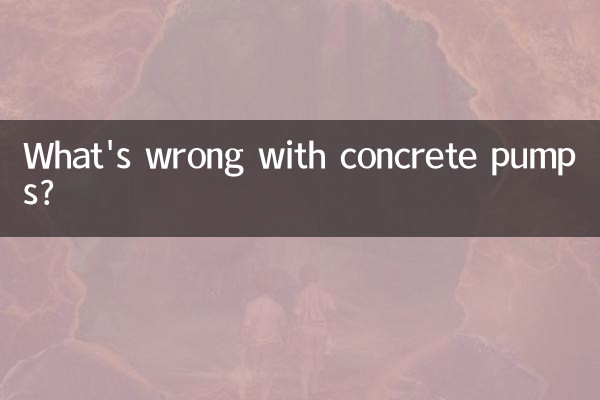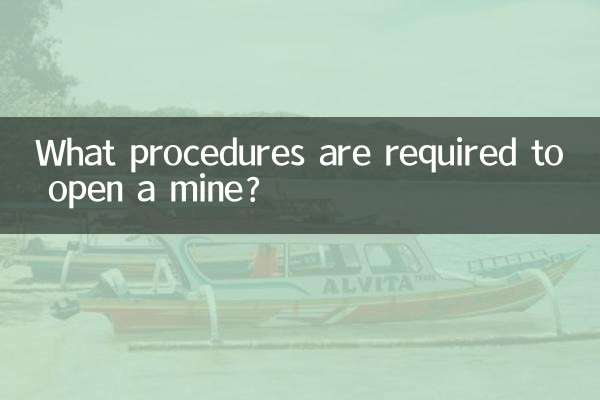What's wrong with concrete pumps?
As an important equipment in construction, the performance and usage of concrete pumps directly affect the progress and quality of the project. However, in actual operation, various problems often occur with concrete pumps. This article will combine the hot topics and hot content on the Internet in the past 10 days, analyze common problems and solutions of concrete pumps, and provide structured data for readers' reference.
1. Analysis of common problems and causes of concrete pumps

According to recent user feedback and technical discussions, common problems with concrete pumps mainly focus on the following aspects:
| Question type | Specific performance | Possible reasons |
|---|---|---|
| Insufficient pumping pressure | Concrete delivery speed is slow and pumping distance is shortened | Hydraulic system leakage, conveying cylinder wear, improper concrete proportioning |
| Blocked pipe | Pipes are blocked and concrete cannot be transported normally | Aggregate particle size is too large, concrete slump is low, and pipeline cleaning is not thorough |
| Hydraulic system failure | Hydraulic oil temperature is too high and pressure is unstable | Hydraulic oil contamination, oil pump wear, cooling system failure |
| Electrical system failure | The device cannot start or suddenly stops during operation | Line aging, poor contact, damaged control module |
| Severe wear and tear | The conveying cylinder, piston and other components wear out too quickly | Poor material quality, insufficient lubrication, improper operation |
2. Solutions to concrete pump problems
In response to the above problems, the following measures can be taken to prevent and solve them:
1.Regular maintenance: Strictly follow the equipment instructions for daily maintenance, including hydraulic oil replacement, grease filling at lubrication points, electrical system inspection, etc.
2.Standardize operating procedures: Operators must undergo professional training to avoid equipment damage caused by improper operation. For example, before pumping, ensure that the concrete proportion meets the requirements to avoid pipe blockage.
3.Use high quality accessories: Select wearing parts such as conveying cylinders and pistons with good wear resistance to extend the service life of the equipment.
4.Troubleshoot problems promptly: Once an abnormality is found in the equipment, it should be shut down immediately for inspection to prevent small problems from turning into major failures.
3. Analysis of recent popular cases
The following are cases of concrete pump problems that have been discussed frequently by users in the past 10 days:
| Case description | Cause of problem | solution |
|---|---|---|
| Concrete pump pipes frequently blocked at a construction site | The concrete slump is too low and the aggregate particle size exceeds the standard. | Adjust the concrete proportion to increase the slump; screen the aggregate to ensure that the particle size meets the requirements |
| Sudden drop in pumping pressure | Hydraulic system leaks, insufficient oil pressure | Replace seals and replenish hydraulic oil |
| Equipment suddenly stops during operation | Electrical circuit short circuit | Check the wiring and replace the damaged parts |
4. How to choose a suitable concrete pump
In order to avoid purchasing equipment with frequent problems, it is recommended to pay attention to the following points when choosing a concrete pump:
1.Select model according to project needs: Different models of concrete pumps are suitable for different project scales and pumping distances.
2.Pay attention to brand and reputation: Choose a well-known brand and refer to reviews from other users.
3.Check device performance: Before purchasing, you should conduct an on-site inspection of the operating condition of the equipment to ensure that key components such as the hydraulic system and electrical system are working properly.
4.After-sales service: Choose a supplier that provides comprehensive after-sales service so that you can receive timely technical support when equipment problems arise.
5. Summary
There are various problems with concrete pumps, but through standardized operation, regular maintenance and timely investigation, the failure rate can be significantly reduced. We hope that the data and solutions provided in this article can help users better use and maintain concrete pumps and ensure smooth construction.

check the details

check the details